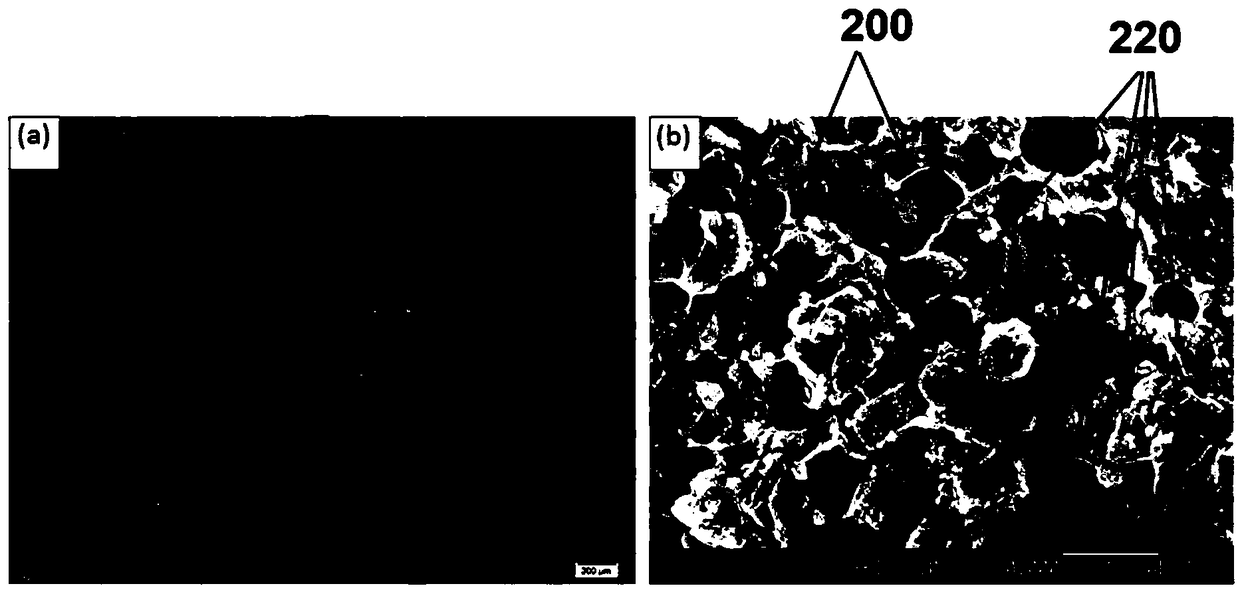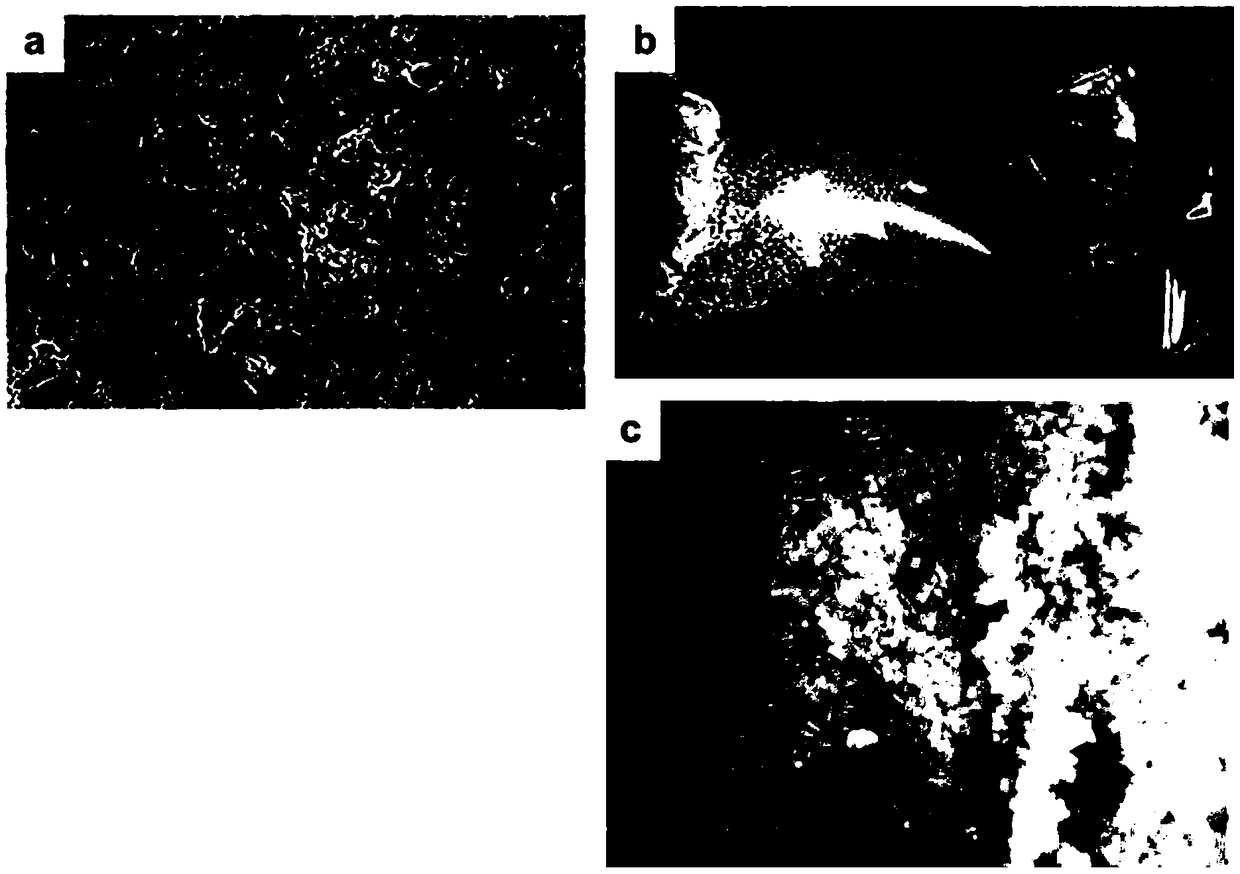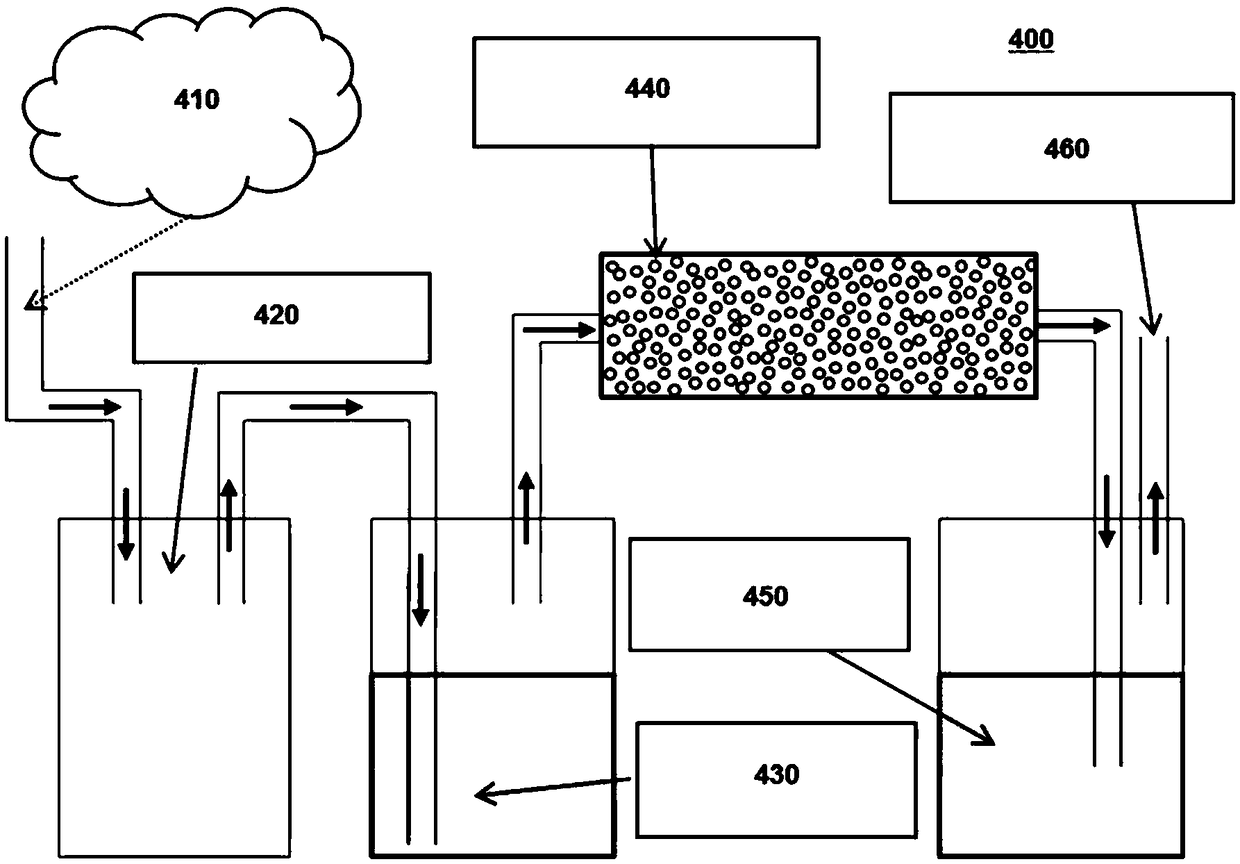Composite material, its manufacture and use in gas purification
一种复合材料、吸附材料的技术,应用在有机和无机复合材料领域,能够解决高能耗、烷醇胺溶液消耗大能量、腐蚀等问题
- Summary
- Abstract
- Description
- Claims
- Application Information
AI Technical Summary
Problems solved by technology
Method used
Image
Examples
Embodiment 1
[0106] Example 1: Preparation of Mesoporous Silica / Acrylamide Composite
[0107] 40g of mesoporous silica (MCM-41) powder, 0.7g of a commercially available dispersant (ammonium polyacrylate, catalog number: 8678, Monomer-Polymer and Dajac Labs) and 0.2g of polyvinylpyrrolidone were added to the premixed solution, The premix solution consisted of 24 g of acrylamide (AM) and 1.6 g of N,N'-methylenebisacrylamide (MBAM) dissolved in 96 g of water. After the resulting mixture was subjected to planetary ball milling for more than 30 minutes, it was degassed to obtain a homogenate. Then, 24 g of a 2% by weight ammonium persulfate (APS) solution and 12 g of a 2% by weight N,N,N',N'-tetramethylethylenediamine (TEMED) solution were added to the homogenate in order to obtain a mixed slurry. Subsequently, the mixed slurry was sucked into a silicone tube and heated in an oven at 80° C. for 45 minutes. After this time, the mixture is pushed out, sheared and lyophilized. After testing, t...
Embodiment 2
[0110] Example 2: Preparation of APTES-grafted mesoporous silica / acrylamide composite
[0111] Add 15.608 mL of 3-aminopropyltriethoxysilane (APTES, 99%, Sigma-aldrich company) into deionized water, and then adjust the pH value to 2-4 by adding nitric acid solution under constant stirring conditions. After adding 40 g of mesoporous silica MCM-41 powder to the solution, stirring was continued overnight. Subsequently, 0.7 g of a commercially available dispersant (ammonium polyacrylate, catalog number: 8678, Monomer-Polymer and Dajac Labs), 0.2 g of polyvinylpyrrolidone, 30 g of acrylamide (AM) and 2 g of N , N'-methylenebisacrylamide (MBAM). After the resulting mixture was subjected to planetary ball milling for more than 30 minutes, it was degassed to obtain a homogenate. Then, 30 g of a 2% by weight ammonium persulfate (APS) solution and 15 g of a 2% by weight N,N,N',N'-tetramethylethylenediamine (TEMED) solution were added to the homogenate , to obtain a mixed slurry. Sub...
Embodiment 3
[0112] Example 3: Preparation of mesoporous silica / acrylamide composite with SBA
[0113] 20g of mesoporous silica (SBA-15) powder, 0.7g of a commercially available dispersant (ammonium polyacrylate, catalog number: 8678, Monomer-Polymer and Dajac Labs) and 0.2g of polyvinylpyrrolidone were added to the premixed solution, The premix solution consisted of 24 g of acrylamide (AM) and 1.6 g of N,N'-methylenebisacrylamide (MBAM) dissolved in 96 g of water. After the resulting mixture was subjected to planetary ball milling for more than 30 minutes, it was degassed to obtain a homogenate. Then, 24 g of a 2% by weight ammonium persulfate (APS) solution and 12 g of a 2% by weight N,N,N',N'-tetramethylethylenediamine (TEMED) solution were added to the homogenate in order to obtain a mixed slurry. Subsequently, the mixed slurry was sucked into a silicone tube and heated in an oven at 80° C. for 45 minutes. After this time, the mixture is pushed out, sheared and lyophilized. Wherein...
PUM
| Property | Measurement | Unit |
|---|---|---|
| particle diameter | aaaaa | aaaaa |
| particle diameter | aaaaa | aaaaa |
| particle diameter | aaaaa | aaaaa |
Abstract
Description
Claims
Application Information
 Login to View More
Login to View More - Generate Ideas
- Intellectual Property
- Life Sciences
- Materials
- Tech Scout
- Unparalleled Data Quality
- Higher Quality Content
- 60% Fewer Hallucinations
Browse by: Latest US Patents, China's latest patents, Technical Efficacy Thesaurus, Application Domain, Technology Topic, Popular Technical Reports.
© 2025 PatSnap. All rights reserved.Legal|Privacy policy|Modern Slavery Act Transparency Statement|Sitemap|About US| Contact US: help@patsnap.com



